"When I Think Of A Jew, I Think Of A Maccabee"
JEWS OF THE UNIVERSE: INTRODUCING RUDY ROCHMAN
“My grandparents were all born in different countries. On my mother’s side of the family, they were born in Morocco and Algeria. They lived in a village called Oujda. In 1948, in retaliation for the creation of Israel, there was a mob of Arabs in Morocco (who don’t represent all Arabs, all Muslims, all Moroccans, nor the government, but just those individuals) who committed a massacre. That was the Oujda Massacre in 1948. Some of their relatives were killed, and eventually my family fled to France.
On my father’s side of the family, they were born in Poland and Belgium. They survived the Shoah. My grandmother hid in a nunnery to survive and my grandfather hid in an attic. And eventually they each found their way to France as well. So both my parents were the first generation born in France. I was second generation.
When I was three, my family moved to Israel — and then, when I was five, to Miami. So you can imagine how, growing up, I inherited so many different mixes of identities and backgrounds and languages and cultures.”
“Growing up in Miami is very different from growing up anywhere else in the United States, because most people in Miami do not identify as American, even if they were born there. Maybe now it’s a little different, because so many New Yorkers have moved there. But in my time, you were Argentinian, Venezuelan, Colombian, Haitian, Jamaican, Cuban, Dominican, Peruvian -– that’s it: you’re one of those things.
I went to a Jewish day school. And there were the Maccabi Games. All the Jews around me were with Team Mexico, Team Argentina, Team Venezuela, and so on. But I didn’t have one of those countries to identify with since I was born in France and my parents had heavy French accents. Everyone saw me as the French kid. I was identified as the French kid even though I never identified as French myself.
But when I visited my family in France, all of a sudden, I was the American cousin.
And going to a Jewish Day School where we had Shaharit – the morning prayers – they would say, “Oh, your last name is Rochman, so your dad’s Ashkenazi. That must mean you have to go to the Ashkenazi minyan.
So I’d need to explain to them: “Listen, my dad wasn’t raised with much spirituality. As Holocaust survivors, they’d decided not to have much religion in the house. He grew up as a strong Jew — he identified as a Jew, he connected with Israel, and in fact, he was the president of the Jewish Student Union in France. But Shabbat, kashrut, kippur: these things were not a part of his life.
So when he married my mom, who came from more of a traditional background, he accepted my mom’s customs. He likes to joke that he converted to Sephardic when he married my mom. I was raised fully Sephardic. And so I don’t know Yiddish or gefilte fish –- that’s not my background, that’s not my upbringing.
At the Jewish Day School, I’d have to explain to the rabbis: listen, I understand that identity is usually determined by the father’s origins, but I have a unique situation. My father wasn’t raised with that tradition, and he took on my mother’s customs.
I’d always have to explain myself. Whoever was asking me who I was and where I was from expected a different answer. And I was frustrated by that. I wanted to give an answer that represented something I felt connected to, not something that was imposed on me.”
“And then something happened to me as a young child that really shaped the course of my life. I tell this story often, because this is where everything started for me, where everything became clear. I see it today as a beautiful gift HaShem gave me because it gave me the tools and the insights that I needed to see it.
I was seven years old when I took a trip to London with my mother and younger brother. We were on a red double-decker tour bus in London and my mom was wearing a shirt that said Emet in Hebrew, which means Truth. She’d bought this shirt in Tsfat, the northern Kabbalistic city in Israel.
As we boarded the bus and she gave the bus driver our tickets, he looked at her shirt and said, ‘Hey — is that written in Jewish?’
My mother said no, that it was written in Hebrew. But she clarified, “Hebrew is the language of the Jewish people, if that’s what you’re asking.”
‘So you people are Jews?’ he asked.
‘Yes, we are Jews,’ she told him.
‘I don’t want any Jews on my bus,’ he told her. ‘You have to get off.’
Well, my mother -- a very strong and fiery Sephardi woman – said, ‘I don’t know who you think you are, but we’re not getting off.’
And then the bus driver stood up, grabbed my mother, and threw her off the bus.
That moment bent my life along a different path forever after.”
“Because with every fiber of my being, I wanted to do something. My father wasn’t there. I realized I needed to protect my mother. But I had no means of doing so. I could react in a frenzy and try to pummel the man, but I was seven years old and I knew I had no hope of achieving anything constructive.
I wanted to respond in a way that was effective. I wanted to take him out – and by that, I don’t necessarily mean that I wanted to hurt him, but that I wanted to be able to prevent him from being able to do what he’d done. I wanted to be able to stop him from attacking my family.
I wanted to be able to deal with a situation like this on every level – physical, mental, verbal, emotional, psychological, ideological and spiritual. I needed a way to process this, to understand it, to defend against it. I needed insight into why this was happening.
I realized in that moment that I had none of the tools I needed in order to be a strong Jew.
In time, I also learned that a lot of Jewish education taught us how to practice Judaism, but not necessarily how to put Judaism into practice: how to defend ourselves, how to prevail against all the counter-narratives against our people, how to build relationships, create coalitions, and even how to break coalitions with those who are against us.
At that moment, I promised myself that the next time I faced any kind of injustice in this world, especially if it was an attack against Am Yisrael – the Jewish people – I would be prepared.
The second thing that moment did for me was that it made me realize that it did not matter where I was born, where I grew up, where I’ve lived, where I’ve traveled, which passports I have, where my parents or grandparents were born, whether I believe in HaShem or not, keep Shabbat or not – all that mattered was that I was a Jew.”
“And so at a young age, I was already asking myself some deeper questions: what does it mean to be a Jew?
Now, as Jews, we say that Judaism is our religion, it’s our way of life, our spirituality. It’s our Torah, our connection to HaShem, our purpose, our history, our land, our aspirations, our holidays, our language: it’s all of these. It’s a kind of portable suitcase of what we left when we packed up from Judea. We preserved it all in this suitcase called Judaism, and we passed it down l’dor v’dor – from generation to generation – with the aspiration of l’shana ha’bah b’Yerushalayim: that one day we’ll come back home and revive it.
But then I realized: wait a minute, when you look at actual religions, and you look at the definition of the word ‘religion’, it’s defined as a belief system in a God, deity, book or prophet. So if one doesn’t believe in that God, deity, book or prophet, then they’re not a part of that religion.
Hence, a Christian who rejects Jesus is no longer a Christian. A Muslim who stops believing in the Quran is no longer a Muslim. A Buddhist who stops finding Buddhist philosophy resonant or profound is no longer a Buddhist.
But though HaShem and our Torah are a fundamental part of who we are that can never be disconnected, if an individual Jew is on a personal path that doesn’t include a belief in HaShem, they’re still a Jew. No one would say they aren’t. So I would not define Judaism as a religion. Not in the sense of what the term actually means.
Religion is really a wandering ideology that crosses the borders of nations. One is a part of it the moment they identify with it. You can have a Nigerian Christian, an American Christian, a Chinese Christian, and these are not the same peoples. But somehow this ideology spoke to them. And the moment an individual renounces a belief in it -– that’s it: they’re no longer a Christian.”
“But Judaism is much more than that. Yes, it’s a form of spirituality, but it’s more than just an ideology or a belief system. It’s a native civilization and a people who have a spirituality at their core — who have a purpose, a connection with HaShem. And in order to preserve who they were when they were forcibly displaced, they created something called Judaism.
An -ism is a social construct. Zionism, feminism -- wherever there’s an ism, it’s denoting a social construct. Judaism is a structure we created to preserve something that was once just our day-to-day life, but since we were now going into the diaspora, we had to preserve it and maintain it in order to bring it back.
And so I realized Judaism actually is not first and foremost my religion. I’m not an American practicing the Jewish religion or a Frenchman observing the Jewish religion; this is everything that I am. This is my birthplace, my people, where my descendants will belong, a connection to land, a purpose, a spirituality.
I’m a Jew. A piece of paper that says America or France on it doesn’t really matter. Right? German Jews had German passports that burned with them in the ovens. So what does a nationality in the diaspora mean, other than a temporary status that can be revoked at any time?
That’s the kind of awakening I had as a seven-year-old. And from that moment on, as I was growing up, anytime someone would ask where I was from, I would say Israel.”
“I left America at the age of 17. Upon graduating from high school, I went to Israel. I served in the Army. I joined the Paratroopers. But after that, I decided to go to college in the U.S., which is where my journey of fighting antisemitism began.
On college campuses, and really in most academic spaces that represented the future political and intellectual class of the next generation -– the next teachers of middle schools, of high schools, universities, the next wave of people in the media, the influencers on social media, the next politicians, doctors, lawyers –- on campuses, they were convincing this future intellectual and political class that the source of all problems is the Jew. Historically, the way anti-Semitism spreads is that you find the source of a given society’s struggle and you blame it on the Jews.
The Christians experienced the death of Jesus: blame it on the Jews.
The Black Plague in Europe: blame it on the Jews.
The economic situation in Spain: blame it on the Jews, leading to the Spanish Inquisition.
The economic situation in Germany: blame it on the Jews, leading to the Holocaust.
Antisemitism functions by finding a community’s source of suffering, and connecting that with the Jewish people.
Now, how are they doing that today in these intellectual spaces? It’s shape-shifted once again, but it’s still the same formula. Anti-Israel activists go to every single minority group and convince them that the source of their struggle is related to Israel and the Jewish people.
They go to the Black students and say: you suffer from racism, and police brutality; we suffer from Israeli racism and IDF brutality. They go to Native Americans and say: white colonizers came and stole your land; well, the Jews are a bunch of white people from Europe who came and stole our land.
They say this even though Jews were killed in the Holocaust for not being white. And white isn’t about skin color, because you can have an albino African or Asian who’s very pale, paler than me, and they’re still not considered white. The societal construct of whiteness denotes a genetic and historical origin in Europe, where one has a status of being a white person among Europeans. But even though Jews had a European experience, we did not originate in Europe and so we did not attain that status.
So I saw this going on and I decided, you know what? We say Never Again, but it isn’t the act of uttering those words that ensures it won’t happen again, it’s a generational commitment to keep it from happening again. And so it’s our turn to rise up, because the problem here is not how strong the anti-Israel movement is; it’s how weak or non-existent our own movement is. That’s where I began my own fight against anti-Semitism.”
“I chose to attend college at Columbia University because it was rated the #1 most anti-Semitic school in the country. In theory, my major was political science; in practice, it was: how to fight for Am Yisrael.
When I arrived at Columbia, I realized the supposedly pro-Palestinian movement on campus was not actually pro-Palestinian at all. Thousands of Palestinians were dying in Syria and languishing in refugee camps in Lebanon and Jordan, or suffering on the border between Gaza and Egypt. No one ever mentioned them. They were just cherry-picking instances of Palestinian suffering to use in service of their agenda, which was to destroy Israel.
But as I saw it, the problem was less what anti-Semites were doing, and more what the Jewish community wasn’t doing. The policy of the Jewish community seemed to be: when there’s an anti-Israel demonstration, don’t engage; don’t do anything about it. When they have their Apartheid Week, don’t do anything. We’ll only do events within our own Jewish community spaces. When we talk about Israel, we’ll talk about cherry tomatoes, Waze, and African tech. We’re not going to talk about our story. We’re not going to talk about what the anti-Israel students are doing. We’re not going to talk about how to build coalitions with other groups, how to narrate our own story for ourselves, and not allow others to hijack our narrative.
What is the story of Hanukkah for, if not to understand what Maccabees were, what Jewish warriors were, when fighting off oppressors who were trying to humiliate us and murder us and scatter us to the corners of the world? I mean, when I think of a Jew, I think of a Maccabee; I don’t think of a pale person with a black hat and peyos eating a bagel with lox in Brooklyn.
There are many different kinds of Jews, but that’s the image of Jews that people have, and they see us as a religion and not as a people. They don’t understand why we have a connection to a homeland, why we are Middle Eastern. I mean, even Ashkenazi DNA is Middle Eastern DNA. It’s more related to Middle Easterners living in the region than white Europeans. And we were persecuted and murdered by those Europeans because we were not white.”
“When I was at Columbia, there were two main anti-Israel student groups: SJP, or Students for Justice in Palestine, and JVP, Jewish Voice For Peace.
SJP is a student group of mostly Muslims. The typical SJP member might be the grandchild of a Palestinian refugee who was displaced from their home, who probably knew a lot of suffering; maybe family members were killed. It was a very ugly war and tragedy was experienced on both sides. Injustices happened on both sides.
They were raised in a household where they were taught to hate Israel. They were taught that they had a home once, and they were displaced, and their people were killed, and so on. I can understand why someone like that would arrive on campus and be part of SJP.
What I could not understand is why a Jewish student who was not raised in that household would become part of an anti-Israel movement. But I realized over time that the reason this happens is that these individuals don’t really have a strong connection to their identity, to their history, to Israel. Their real identity is the left.
And the left is fine, but unfortunately, today’s extreme left is saturated with anti-Israel sentiment. And liberal Jews are told that if they want to be part of the progressive movment, they must hate Israel. And if they don’t have a strong enough connection to Israel, they’ll feel the need to become anti-Israel to be accepted. It’s about feeling a sense of belonging within their group.”
“The first event I attended at Columbia was a BDS 101 event. There were about 100 seats in the room. And there was a line for this event that went down the stairs and all the way outside, to the point where they maxed out the capacity of the room and had to host another event two days later for all the people who couldn’t get into the first one.
To counter activism like this, my goal was to create a grassroots movement on campus that was not run by other umbrella organizations, but was really run by the students for the students, where we ourselves were doing things, as opposed to outside organizations giving us fliers. I reached out to the pro-Israel students on campus and told them we needed to create a group that didn’t take a political stance — like one state, two-state, three-state, left wing, right wing — but just told the story of Israel. And I told them our group needed to have more than just Jews in it.
We created SSI, which stands for Students Supporting Israel. Eventually 25% of its members were non-Jews. We had a Muslim from Iran on our Board. We had two other Muslims from Pakistan and Bangladesh serving as Ambassadors. We had Asians and Christians in the group.
We were told all the time by Jewish students that our activism, our presence, our commitment to Israel had made them feel proud again, made them feel like they could wear a kippah on campus at a time when many people were taking them off, made them feel they could support Israel openly.
Today there are more than 200 SSI chpaters in the U.S., Canada, Argentina and Australia, with more than 3500 active members and alumni.”
“The origin story of my African project also started when I was a student at Columbia. One day I was at the Chabad House, working on my laptop — they had good wifi — with Rabbi Bloom, and this woman comes in. Clearly she had been there before; I assumed she was a former student.
She was holding the kind of kippah that I’m wearing now. It was a hand-made kufi cap with a Magen David on top and menorahs embroidered around its border. I’d never seen one like it before. She came in and said, “Rabbi, I brought you a gift! I visited the Jewish communities in Uganda and Tanzania, and I got you this kippah.”
And I was dumbfounded. Jewish communities in Uganda and Tanzania? Mah zeh –- what’s this? I’d never heard of this. So when she was done speaking with the rabbi, I approached her and asked her to tell me about these communities.
She pulled out her phone and showed me Black Jews in Africa, wearing tefillin, talking about Moshiach, saying l’shana habah b’Yerushalayim: we want to live there and serve in the Army and go to Yeshiva, and it was mind-blowing. There’s a recognition when you see a Jewish soul, when they’re talking about things you know intimately, that have been passed down from your own ancestors.
I wanted to know why I had never heard of these Jews. What was their story? Where were they from? Had they converted? Were these the lost tribes of Israel? We’ve all heard of the lost tribes. It says in the Torah that in the time of Moshiach, the tribes of Israel will unite from the four corners of the earth. We also know that the Jewish people today are the descendants primarily of two and a half tribes.
We fifteen million Jews are shevet Yehudah, the kingdom of Yehuda, Benyamin and Levi, while the rest were displaced by the Assyrians and scattered across the globe before the Roman destruction of Jerusalem. So that means there are nine and a half other tribes out there. We have family members who are disconnected.”
“Imagine if I were to tell you that tomorrow, all Ashkenazi Jews will disappear. You’d likely think: wait a minute, it won’t be a Jewish world without Ashkenazim. Or all Sephardim will disappear. Again, there’s no Jewish world without Sephardim. So we understand the relevance of these two communities. And because we understand their relevance, the idea that they could disappear sounds crazy. But that’s because we’re conscious of their place and presence.
But we’re not conscious of all the other pieces that are still missing as a part of the greater light and image that we’re supposed to be. So originally this project started by finding communities of Nidchei Yisrael: the dispersed of Israel. I realized that a lot of these Jews were being persecuted and killed in many places, including and especially in Nigeria.
And the way I saw it was: Okay, if they had been the first to come home to Israel, and established a strong country with a strong economy and military, and my family was still being killed in the Holocaust or being persecuted in the Maghreb in North Africa, or in the Middle East, wouldn’t I want them to come for us? Wouldn’t I want them to recognize us and come help us and save us?
Imagine that we were back in the Holocaust, where Jews were powerless, and there were these tribes coming back to Israel, building strength – wouldn’t we expect them to come and save us? So how could we not do something now that our side of the family came back?”
“But we need them as much as they need us, if not more so. If you have a puzzle, and you have a bunch of scattered pieces, you need to have all the pieces on the table to know they fit. Whereas if you have three pieces out of a hundred, you won’t even know what they’re a part of or how they fit together. If you have a car, you need all the pieces of the car for it to run. If you have a shell, or even some of the most critical pieces and yet not all the pieces you need to operate a car, then you can’t drive.
The vessel of Israel – the reasons we’re so confused and fighting each other in Israel and we haven’t found the thing that connects us all: one, we’re lacking a mission statement and the direction in which we need to go, and two, we are still lacking all the pieces that we need.
We need to bring the tribes of Israel together from all four corners of the earth to reach the time of Moshiach.”
“And so I decided we needed to do a documentary, which evolved to a six-part full-on series, in which we find the stories of these displaced communities – Season One in Africa, Season Two in Asia, Season Three in South America. To date, we’ve been to Nigeria, Uganda, Tanzania, Zimbabwe, South Africa, Madagascar, the Ivory Coast, and Ethiopia, locating these different communities. And when we finish Season One, we’ll continue on to Asia and to other places where we have Nidchei Yisrael.
Though there is tremendous variations in their stories, all of them have a few things in common. All of them are rejected and hated by the local population. They’re all being blamed for running the media, the government, the economy, the professional sector, and real estate… the same tropes applied to Jews all around the world are applied to them too.
I haven’t seen a single community that hasn’t preserved the practice of niddah – the separation between husband and wife during a certain span of days within her menstrual cycle. I haven’t seen one community that’s lost the tradition of brit milah – circumcision. Or kashrut, the kosher laws. All these communities observe Pesach. They’ve preserved Shema Yisrael. A lot of them have lost the written Torah and only have access to oral Torah.
They have parts of our tradition that have endured, but they also lost a lot of other things along the way. You can’t possibly judge this – it would be like judging a child survivor of the Holocaust for not knowing how to do the motzi when they didn’t have the privilege of being raised in a Jewish setting. This is our family, and we have to care, because they’ve been through a lot.
So I think it’s a crucial part of our next chapter of Jewish history to reintegrate these communities. My role is to bring this conversation back to our consciousness. And over the years, I’ve realized that this is much more than a humanitarian mission. Because we can’t be who we are without them coming back.
✡️


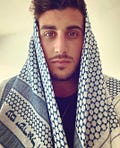


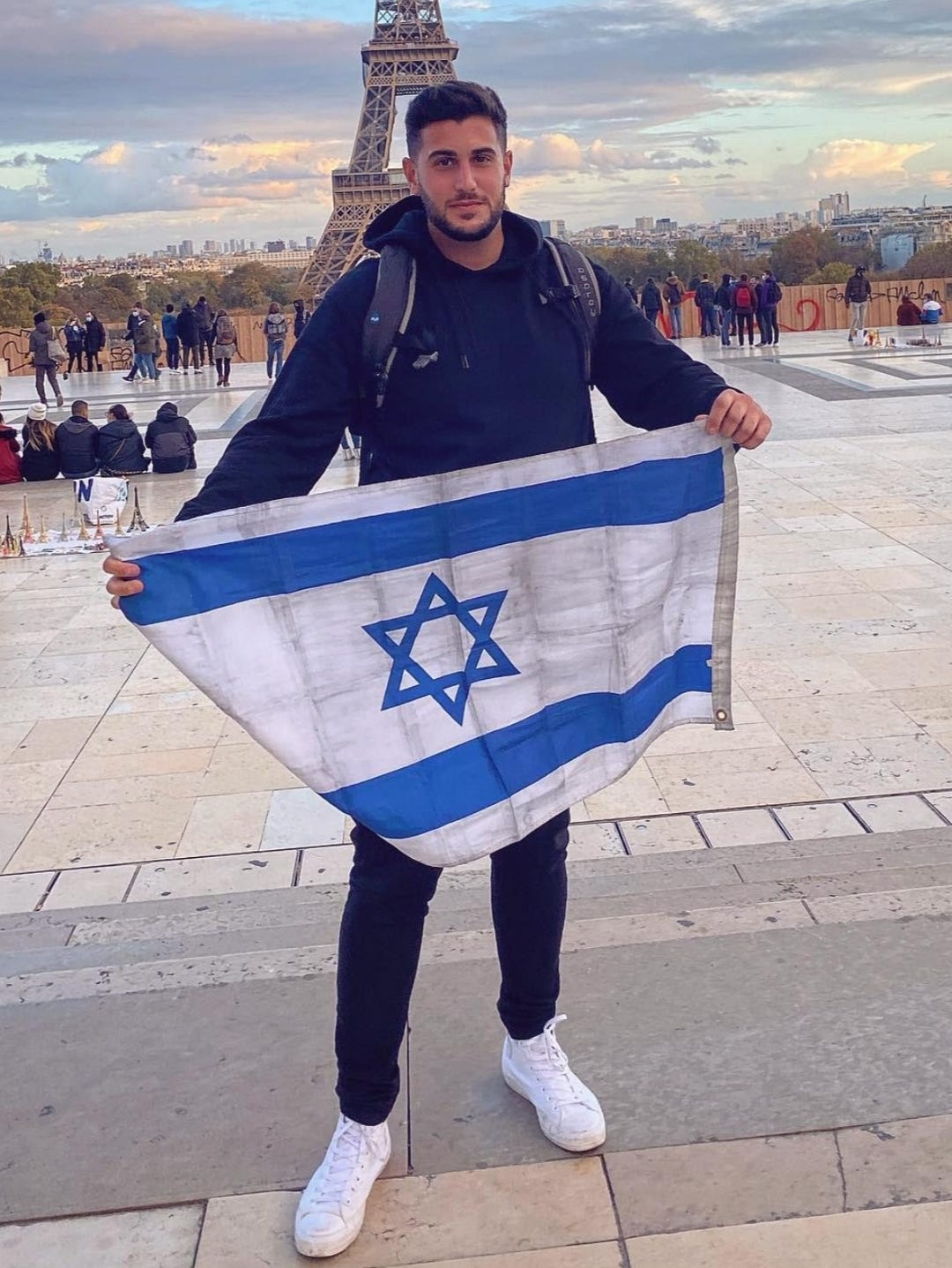
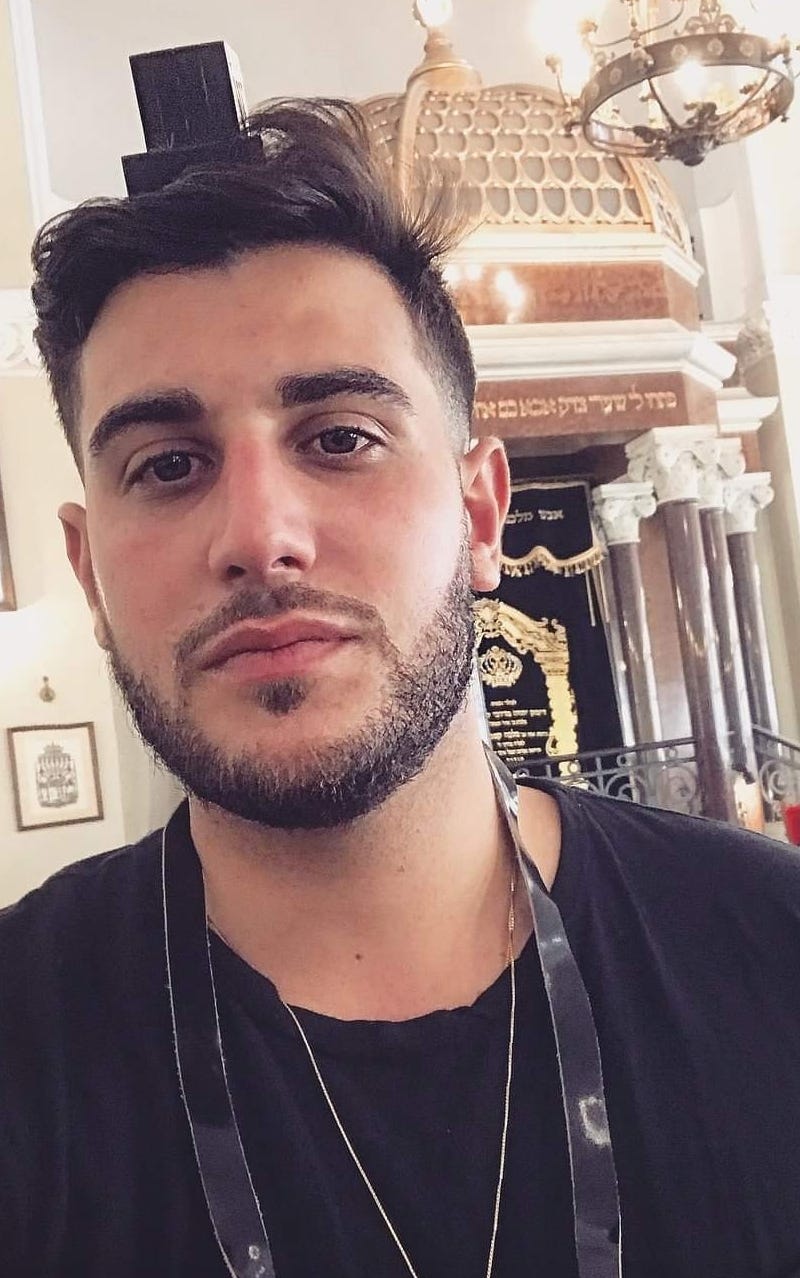
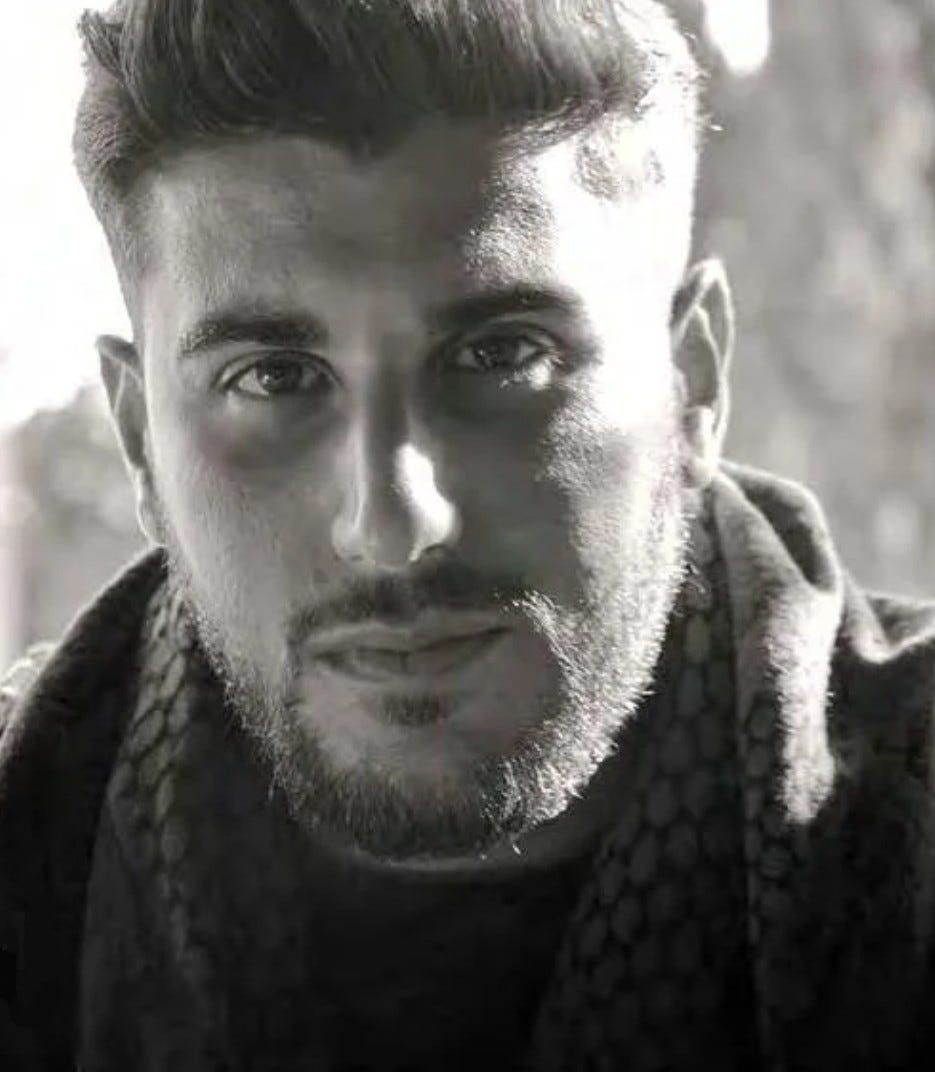
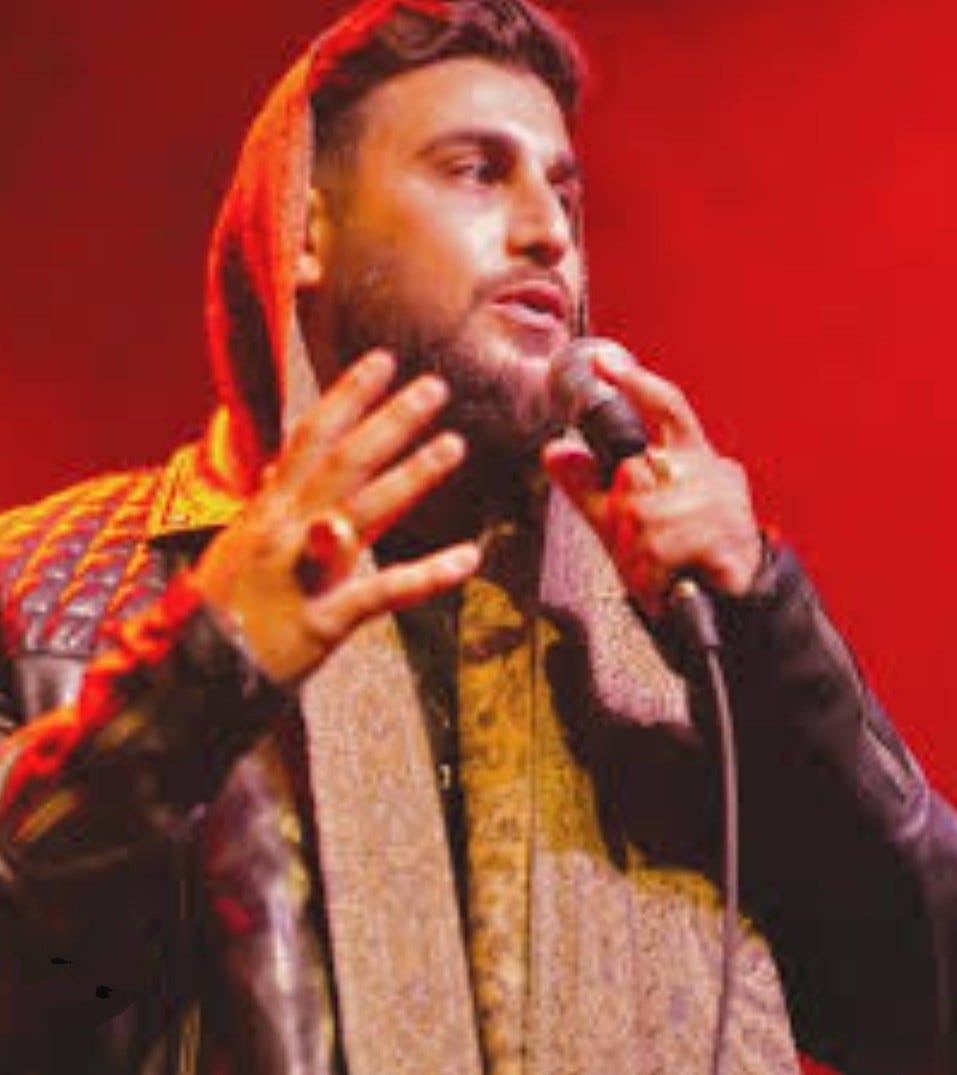
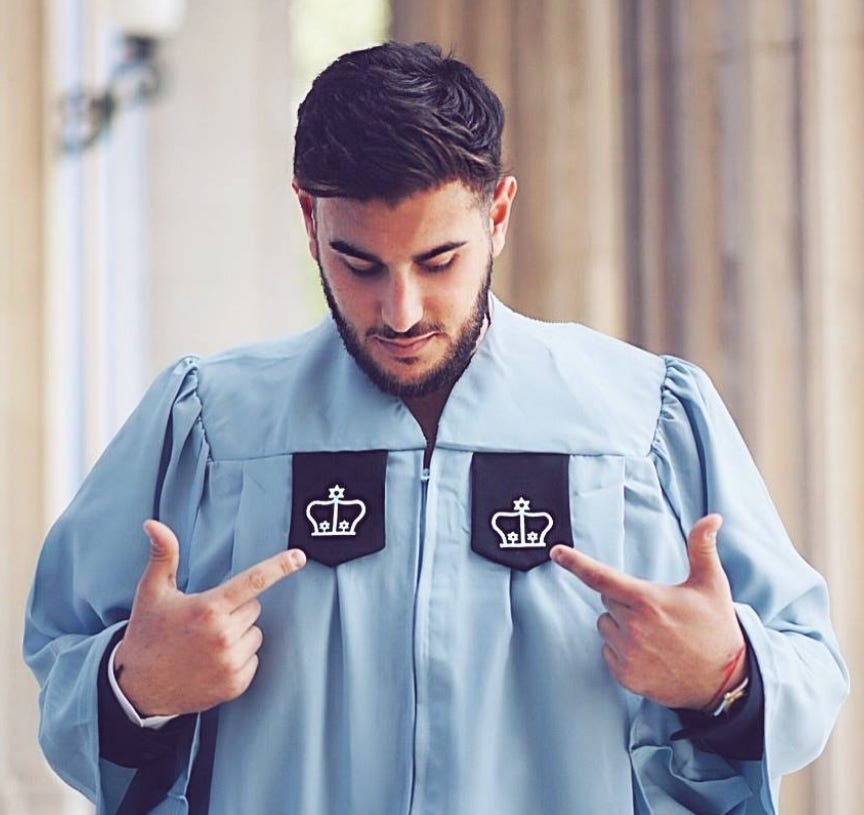
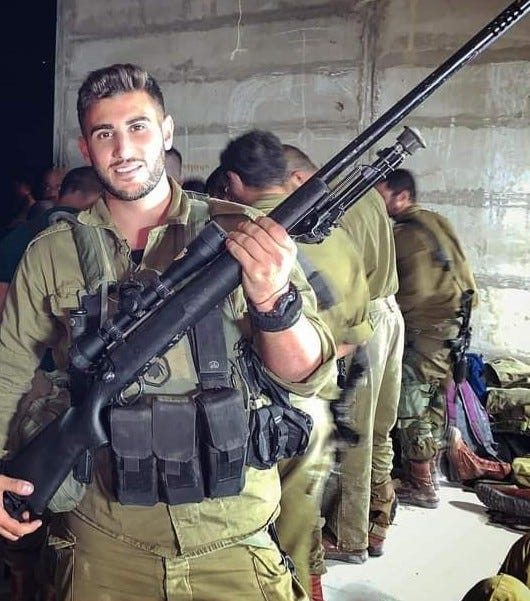
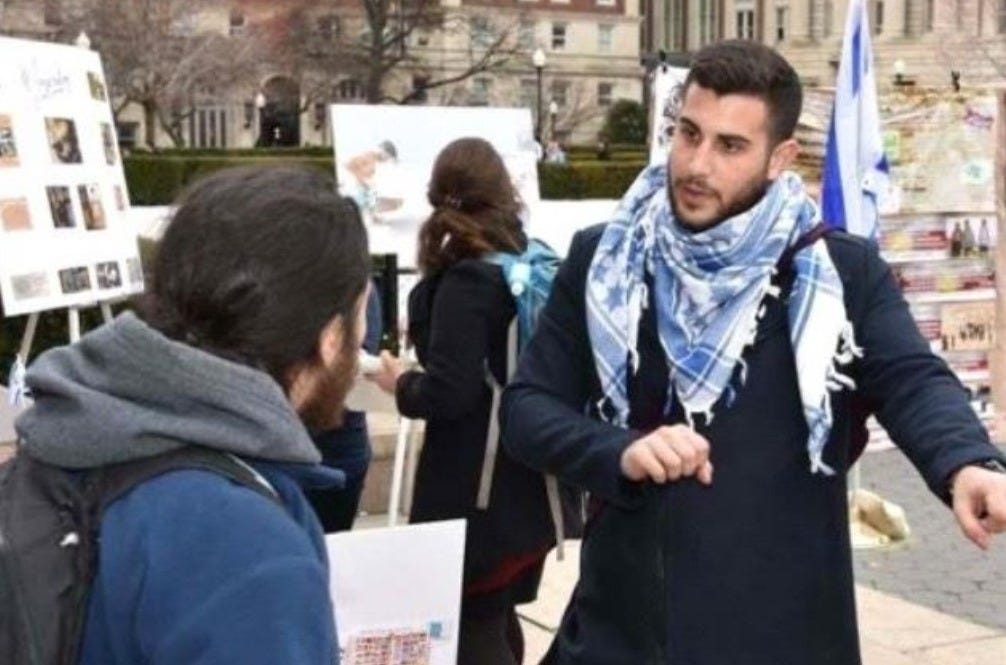
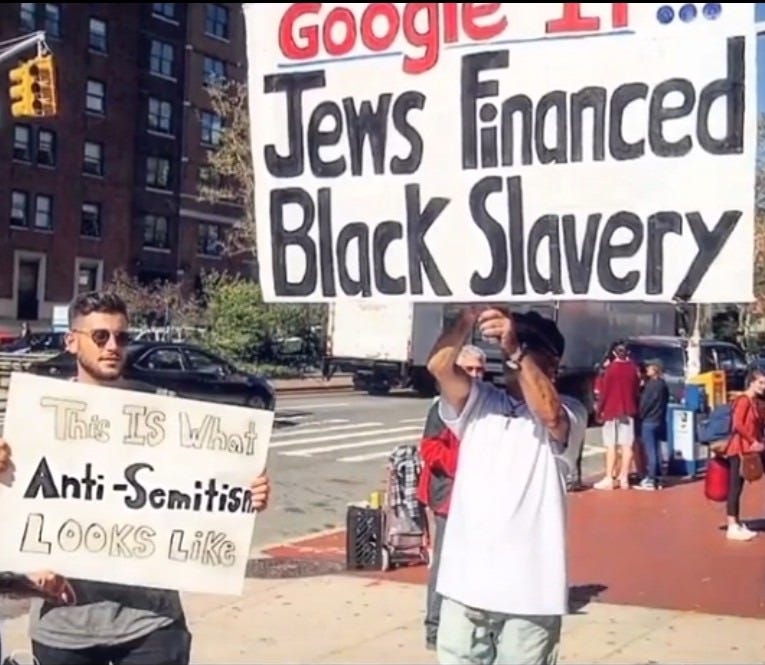
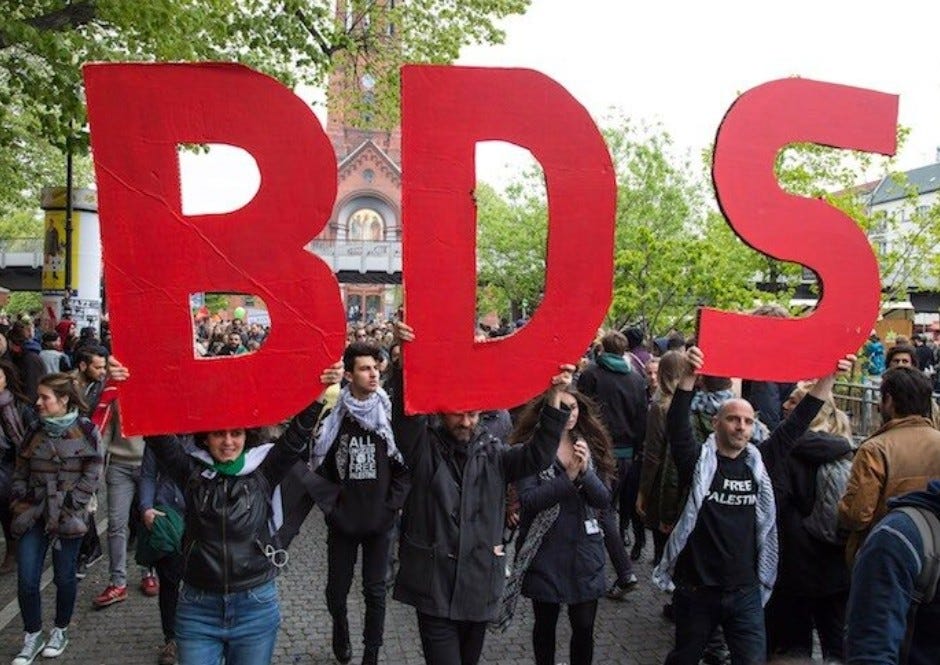
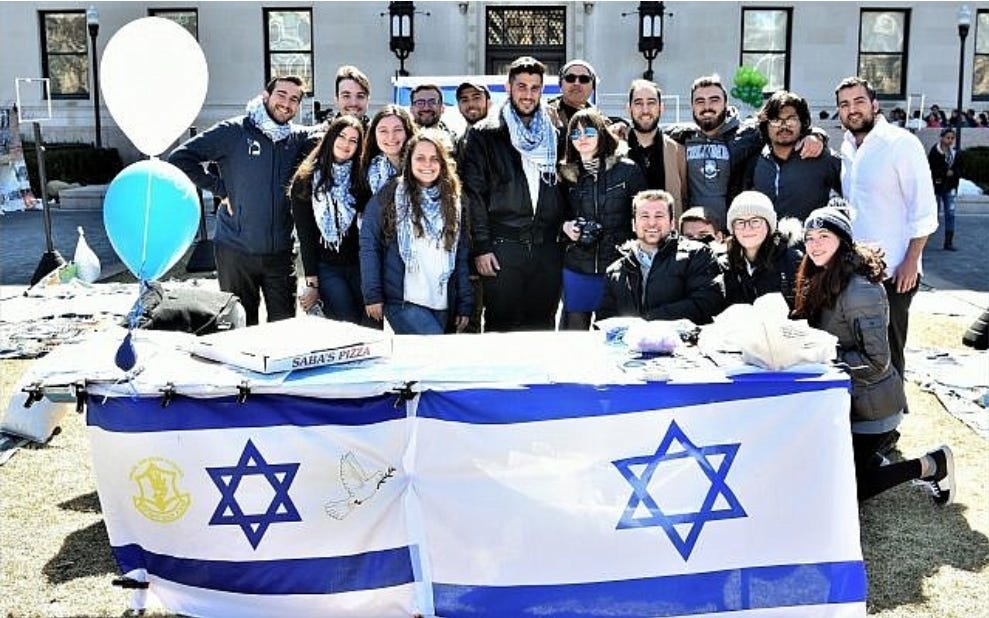
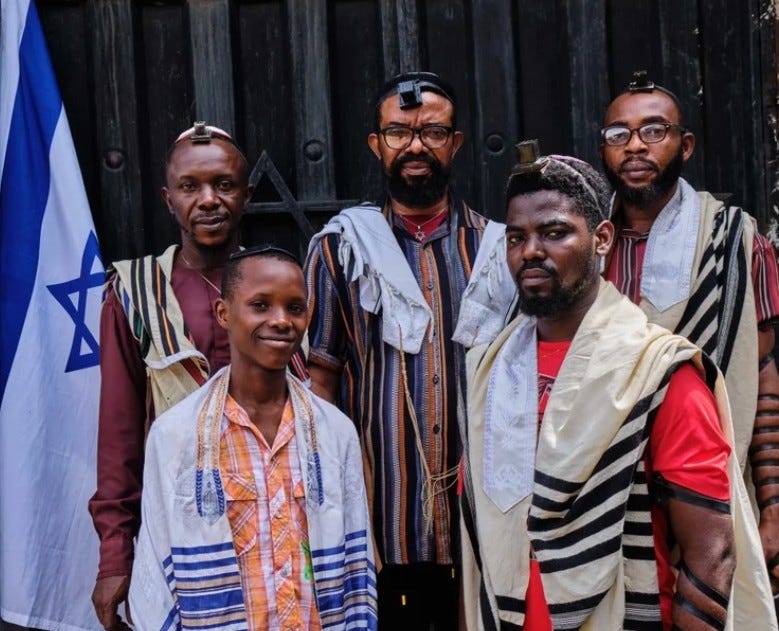
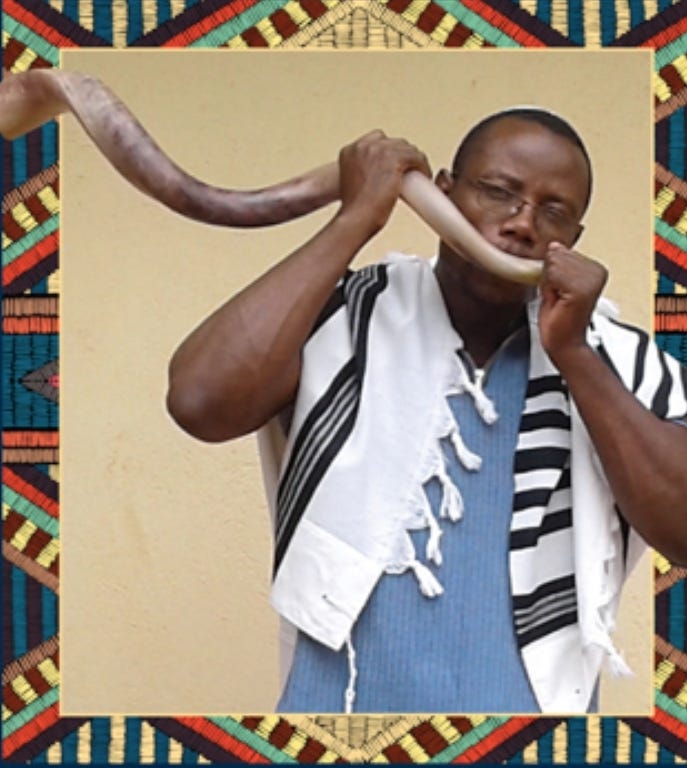
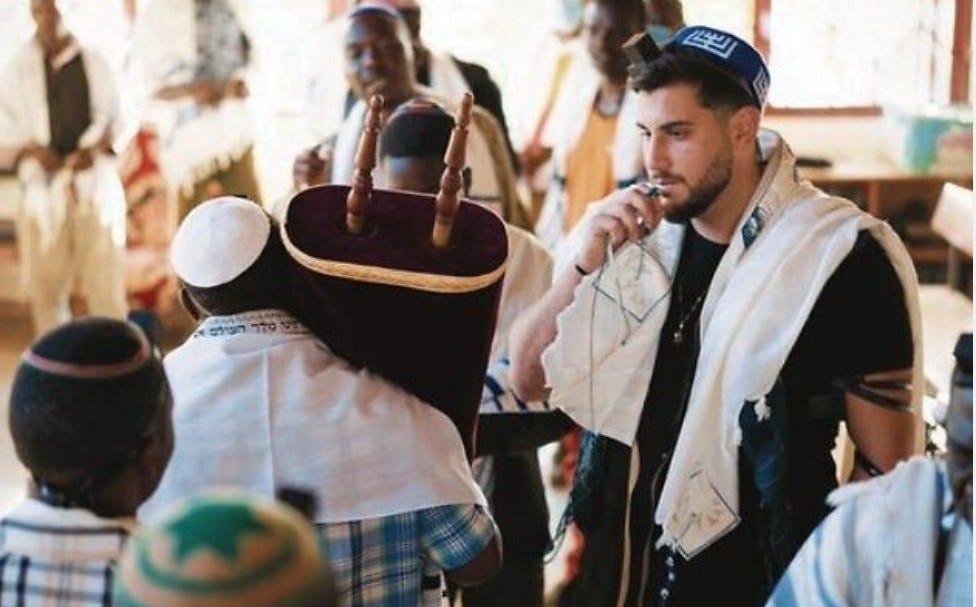
Rudy is a true hero--and a true Jewish hero and an inspiration for us. I admire him for his clarity of purpose, for living his beliefs, for his courage, for his compassion, for his talents and skills with language and for his knowledge. Thank you Elissa for highlighting him and continue to let us know how we can support him and you.
Our Maccabee forbearers: the original Inglourious Basterds